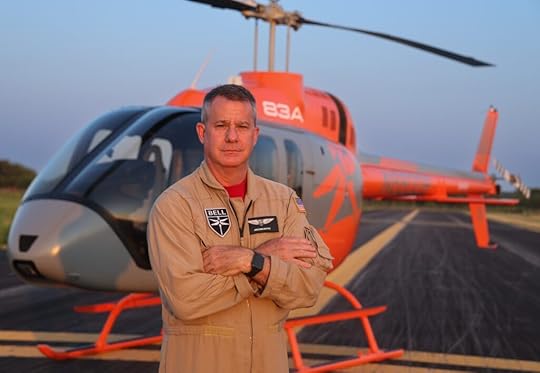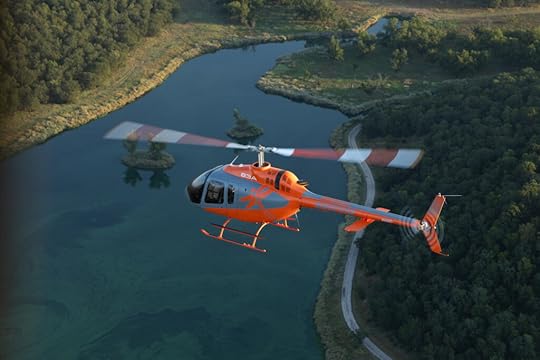Army Flight School Next: A new way to train the next generation of aviators
New global threats require new ways of training helicopter pilots, and the US Army’s Flight School Next program aims to do that through procurement of a new flight-trainer for pilot candidates plus associated ground training.
Bell has been training helicopter pilots since the 1940s and has established itself as a global leader in training civilian and military pilots to safely operate Bell aircraft in demanding mission environments. Today its versatile Bell 505 helicopter is one of the preeminent training platforms.
Bell has worked with various customers to develop training programs utilizing the Bell 505 and leveraging the company’s expertise as a trainer and as an original equipment manufacturer (OEM). As the US Army takes a critical look at its Initial Entry Rotary Wing curriculum through its Flight School Next program, Bell’s decades of experience with training will be a critical enabler for its proposed solution.
Breaking Defense discussed Bell’s training experience and proven platform with Joseph Decapite, senior manager of flight training, Bell Training Academy, and Matthew Dorram, capture lead, Flight School Next.
Breaking Defense: Bell is well known for manufacturing helicopters, and we’ll discuss the Bell 505, but first let’s share your background in training and what Bell is providing its customers currently.
Decapite: Bell’s been doing training for decades for both pilot and technical training here at the Bell Training Academy in Fort Worth, TX, where we instruct them through classroom lectures, flight training devices and aircraft that complement each other.
 Joseph Decapite, senior manager of flight training, Bell Training Academy.
Joseph Decapite, senior manager of flight training, Bell Training Academy.In addition to our Bell Training Academy, we also established training facilities in Valencia, Spain and Singapore. We’re always looking at opportunities around the world where we can bring training to the local customers. We look at options for that through what they call “certified training facilities.”
With our current customers, they’re sending some of their customers or students to the Bell Training Academy. They’ll come for initial classes, which are anywhere from a five to 10-day course depending upon the model and the mission they’re training on.
The Bell 505 is one of our most in-demand training aircraft. When training customers on the aircraft they can come in, learn the systems of the 505, then move to the flight training device (FTD), where we drive home what was taught in the systems class so they can effectively and efficiently troubleshoot emergencies in the aircraft. We continue the training by introducing them to the aircraft, allowing them to execute the checklist they learned from the FTD, as well as go over emergency procedures, basic maneuvers and full-down autorotations.
What is special about Bell’s approach to training?
Decapite: It all starts in the classroom. We use 3D interactive courseware. In the past, if someone asked me a question in a systems class, I’d have to go back a couple of PowerPoint slides to show them. Now I can rotate the object in front of them on the screen, I can take it apart in front of them in exploded views on the monitor. It makes learning more interactive, and our customers get a much better understanding of the aircraft systems.
When that module is completed, now they can walk out into our 20,000-square-foot technical training hangar and get their hands on the actual parts. If you’re like me, I’m a tactile learner – you can explain to me, but once I get my hands on the parts I understand it much better.
We also have the flight-training devices because we want them to learn the basics of the checklist, make sure they thoroughly understand that we want to go through all the emergency procedures. That’s very important because you can’t reproduce all the emergencies in the aircraft. You can do all of them in the simulator. There are some key ones in the 505 that we want to make sure we show them.
Our approach to training is now evolving with things like virtual and mixed reality systems. We’re working with our sister company TRU Simulation+ and they’ve developed the 505 Veris™ VR Flight Simulator. That’s a key training asset because it will be a large cost savings for our customers. It’s going to minimize how long it takes them to learn how to hover; by doing that it will reduce the cost of the training and capitalizes on training time in the aircraft.
What is Bell currently doing with its military customers?
Decapite: Specifically with the 505, we’re seeing a lot of military organizations train with this platform including the Republic of Korea, Jordan, Jamaica Defense Force and many other countries’ militaries. We’re working with them to help develop or support refining a training program that is designed to support the establishment or enhancement of their aviation units. As the OEM, we’re able to help get them information and make changes to the aircraft that are necessary to support their particular operations. So, we have much more capability here at Bell that we can bring to the table to support those customers.
Currently we’ve got 36 instructors here in Fort Worth. Of those 36, 70 percent are military veterans. So, we’ve got a lot of military experience. They have experienced the type of training military pilots go through, which helps them with the training we execute.
To highlight some of the things we’ve done with the different military organizations, four years ago, the US Navy was having some challenges with the execution of autorotations, so we went out to Whiting Field in Florida and conducted training for them. We did a train the trainer course for their Helicopter Instructor Training Unit to impart some techniques.
Tell us about customized training solutions Bell has offered for customers. How does the Army’s Flight School Next Benefit from this?
Decapite: We get a lot of questions from our foreign military customers because they come here thinking they signed up for an initial or refresher course, and then when they get here, they realize that there’s a lot more that we can help them with.
After seeing this, they start asking for more tailored training. Since they may not know the airframe that well, we frequently get asked questions like who’s going to test the aircraft, what tools are required, and what needs to be in place when they get to their home country? These are the types of things that we can help them with in our maintenance test-pilot course.
We’ve seen that they ask for left-seat pilot in command courses. Primarily we instruct them while they’re in the right seat. We are able to tailor our training to enable them to get the frame of reference from right seat to left seat so that when they’re with their students, they’re comfortable with that.
After that, they’ll often ask us to come to their sites and help them establish their course, help build their syllabus, get them up and running with a Safety Management System (SMS). We’ll do whatever we can to tailor the training to meet the needs of our customers and help them establish or enhance a military training organization.
 Matthew Dorram, capture lead, Flight School Next.
Matthew Dorram, capture lead, Flight School Next.Dorram: For Flight School Next, Bell is actively designing a custom-tailored approach. We’re pulling all of our best practices from our previous experience with established training programs and tailoring things to what we think the US Army specifically needs – bringing modern technology and the things that Bell does well that Joe talked about. We’re going to apply that to a custom solution for the US Army.
Pilots have been training in helicopters for decades. How can it be done better?
Decapite: What we have noticed is as aircraft evolve and automation becomes more popular, it’s easy for pilots to not give their fundamental skills the attention that they should. When they start having emergency procedures where they lose some of the systems in the aircraft and that automation is not working for them anymore, they’re challenged in flying the aircraft.
That’s the beauty of the Bell 505. It’s a very basic aircraft; it’s a fantastic trainer. It’s very simple, and when I mean simple, there’s very few switches in the cockpit, the circuit breakers aren’t located in there, instead they are in the aft fuselage. It’s easily started and it handles well for basic piloting skills. Then, once it gets time to move into things like basic instruments or advanced instruments, and to reduce pilot workload, they have a Garmin autopilot system they can turn on so they can focus more on the instrumentation or conducting approaches in the helicopter.
The automation you mentioned contributes to students not having enough experience in autorotations, for example. Explain.
Decapite: One of the things we teach frequently is performing successful autorotations; we still conduct full-down autos. It’s very important for students who will be flying an aircraft that in the event they have an engine failure, they have the survival skills necessary to safely get that aircraft on the ground, protect them and any passengers they might have on board. Additionally, ensure each aviator has the confidence to recover an aircraft.
We do that through repeated autorotations in our practice area. What we’re trying to primarily teach them is energy management of the rotor system and give them the tools that they’re going to need in their toolkit so that in the unlikely event the engine does quit, they have all the options available to them to safely get that aircraft on the ground.
We’ve gone away from, and I know some people don’t like hearing this term, the cookie-cutter auto, where it was 100 percent 60 knots ball centered. Wherever that takes you, that’s where you’re going. We want them to use things like their main rotor RPM (Nr), which essentially is the energy in the rotor system. We want them to utilize that to hit a specific spot that they’re targeting because no one knows when and where this engine’s going to quit, and we want to be able to land in a small, confined area if they have to without the engine providing power for sustained flight.
 The Bell 505 helicopter is used extensively around the world, including in training programs for the US Army. (Photo courtesy of Bell Textron)
The Bell 505 helicopter is used extensively around the world, including in training programs for the US Army. (Photo courtesy of Bell Textron)Final thoughts?
Dorram: Bell enjoys a rich history of training. We trained the first US Army pilots back in 1946. We’ve been training military pilots in different ways at different times for a long time. We have the luxury of being able to use all of the experience that the staff at the training academy does every single day. That becomes a critical enabler that will allow us to be ready to train the next generations of US Army pilots.
Douglas A. Macgregor's Blog
- Douglas A. Macgregor's profile
- 28 followers



